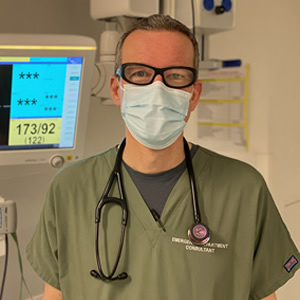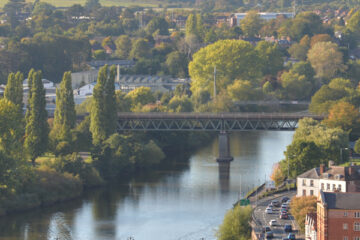RCEM North West: The Emergency Environment
Andy Ashton, RCEM North West Regional Board Chair, April 26, 2023

A few weeks ago, we flipped our emergency department. Appalled at the sight of strong, reliable nurses in tears at the effort of trying to triage ambulance patients on the back corridor, we decided we needed to take action. With blinding speed, we moved out of our consultants’ offices into some new (long coveted) offices which even had a window. The old office area was converted to the ED SDEC. The area which had been the ED SDEC (the old observation ward) became the ambulance assessment unit. Ambulance patients were brought to this area where they were assessed in a bay, on a trolley, in privacy; truly a revolution in patient care. Now, although we still have patients on the corridor, it is a sleepy backwater of patients who are many hours down their journey, have been assessed, in whom treatment has started and who have been stratified to be the lowest risk. The department, although still overloaded, feels safer. The conversion, although it took a week of angst, has been worth it.
The surprise has been the new ED SDEC. Who knew that our offices would have made such a fantastic clinical area? ED SDEC used to be the heartsink area when roles were allocated at morning handover. It used to take twice as many doctors to see the same number of patients in SDEC as in our majors wait queue. Now people smile when they are allocated to ED SDEC because it is an efficient area. Doctors like being efficient. They like being able to see patients quickly without having to hunt for space, hunt for notes, hunt for equipment. Space matters. Place matters.
And we are lucky in this. Our Trust wins the Patient Led Assessment of the Care environment (PLACE) survey year after year. It’s a fantastic PFI newbuild from 2010 and I think those who do not rotate to other areas often do not appreciate what a magnificent benefit this is.
A few miles down the motorway, in the middle of town, a merger between two hospitals has coincided with a move of one of the hospitals to a new building. This new hospital has less beds and a smaller ED. The compensation for theis was the adjacency of the AMU. However, several specialties decided that rather being confined to one hospital site they needed a footprint at the other hospital site and this footprint was acquired from the ED territory making the department even smaller. So whilst it’s new they are having to get used to working in a very bijoux environment.
In that same trust, many years ago, the CD of the emergency department fought for years to keep a room empty for the CT scanner for which he knew he would eventually gain funding. If the room had been occupied, he explained, the funding would never have been granted. Keeping a room empty is no easy matter. Nature abhors a vacuum, but not as much as the NHS are abhors an empty room. The half life of a vacant space is measured in hours rather than days or weeks. Move out of a room and the next morning there will be a sign on the door in large font, stating the new function of the room and politely but firmly requesting that no one else should enter.
Even tiny variations can make a massive difference. A few years ago I spent £5,000 of the Trust’s money to have an arch made in the wall behind the nursing station in the paediatric area. This gave access to a small redundant room behind. At the time the price stuck in my throat but now I feel that was the best use of Trust capital I ever made. It gives the doctors working at the nursing station a space for confidential conversations and a reprieve from the crying children in the adjacent waiting area and the reproachful glances of the weary parents should the doctor stop writing in the notes for a moment to turn and make a casual comment to their colleague.
The paediatric area is also being rebuilt and will eventually grind into action some months after the due date. It will bring very welcome additional space for assessing and treating children. It will include an observation area so there have had to be many meetings discussing who will staff the area within the ED. The risk is that rather than there be more space for the emergency department an area from within the hospital will be moved into the ED to make more inpatient beds, leading to no gain in space and a loss of control. And these areas tend to operate only 40 hours per week leaving us looking at them balefully for the other 128 hours of the 24/7 week. It requires endless skill and vigilance to negotiate a satisfactory arrangement. These can be achieved, there are several examples in the region where specialties work beautifully side-by-side in the same space, but only with understanding and trust and patience.
Over on the east side of the region, trusts are breaking ground for a new trauma centre or whole new hospitals. I wish you luck in the planning and the execution of those plans for a happier life in your new working space.
Andy Ashton



0 Comments